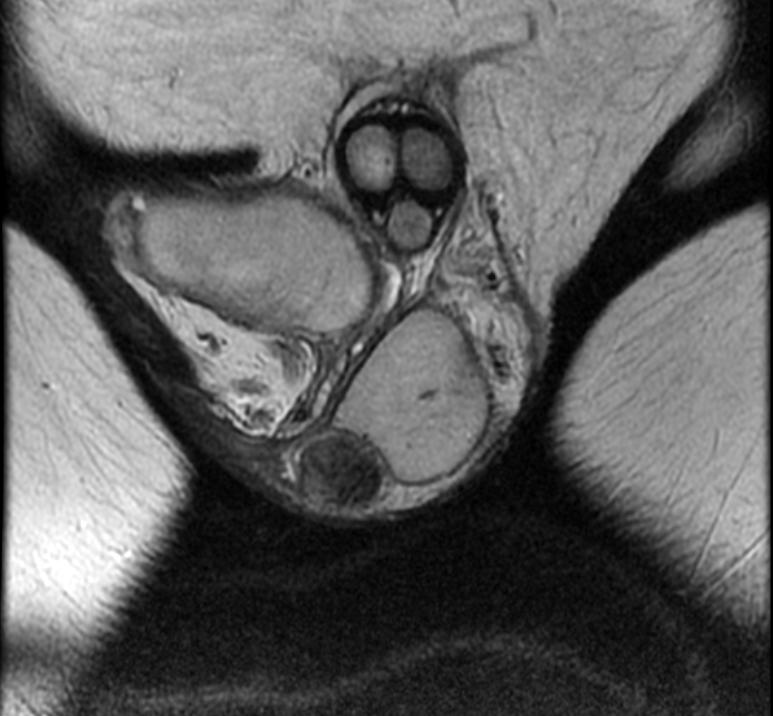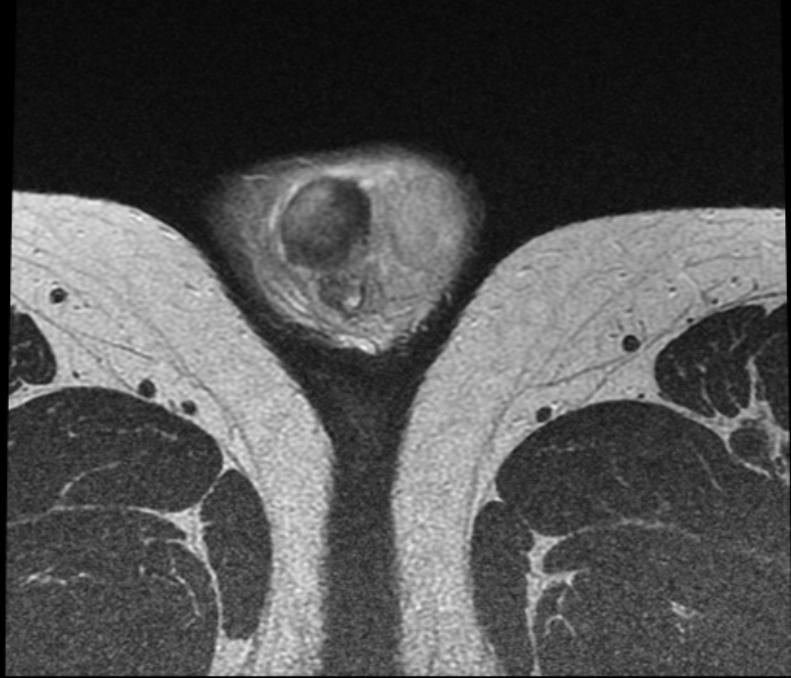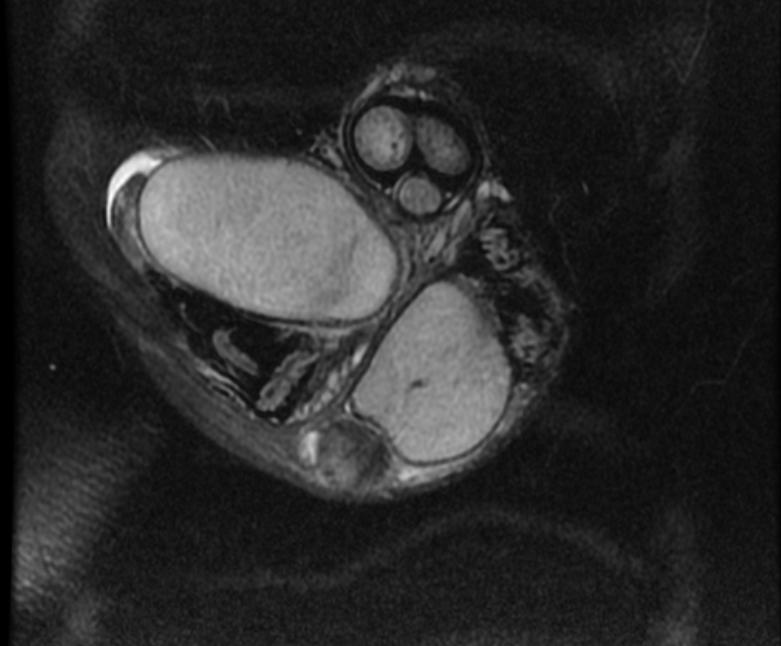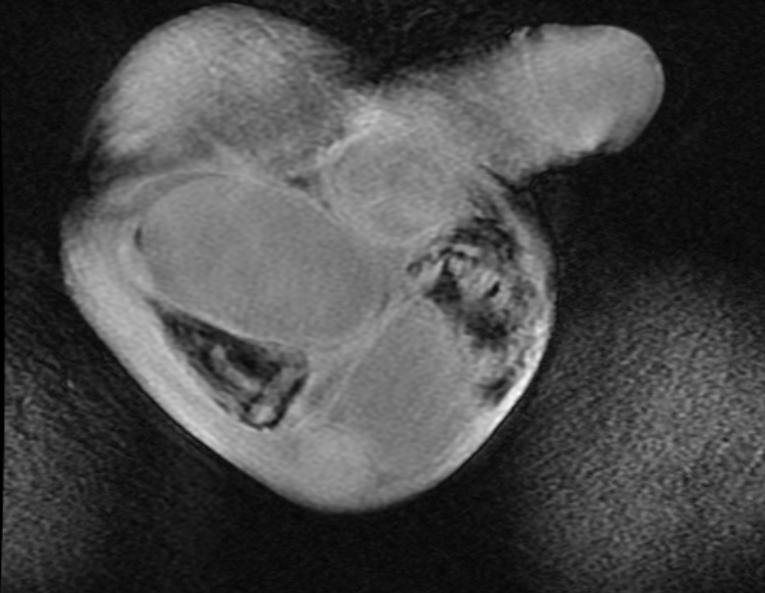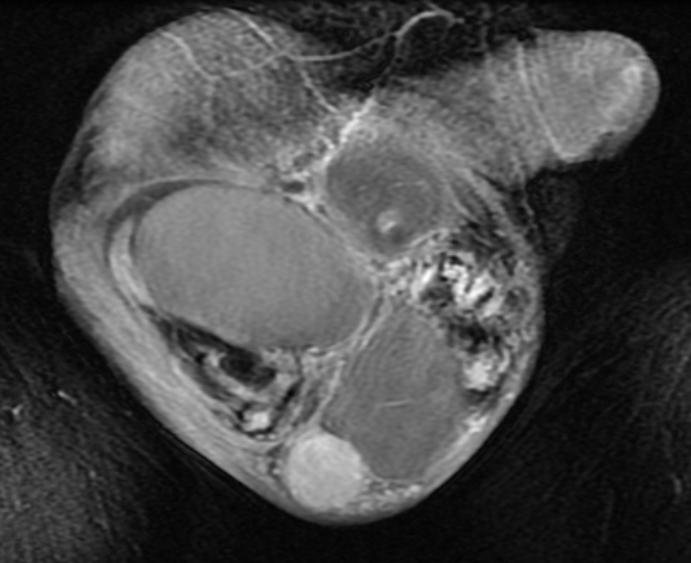Adenomatoid tumor
| Adenomatoid tumor | |
| ICD-O: | 9054/0 |
|---|---|
| MeSH | D018254 |
Editor-In-Chief: C. Michael Gibson, M.S., M.D. [1]
Overview
Adenomatoid tumor is a mesothelial tumor. It generally presents in the genital tract, in regions such as the testis[1] and epididymis.[2] However, it also has been found in the pancreas.[3]
Pathophysiology
Adenomatoid tumors are benign, solid extratesticular lesions that can originate from the epididymis, tunica vaginalis, or spermatic cord. They are the most common tumor of the epididymis. They occur more often in the lower pole than in the upper pole by a ratio of 4:1. Usually an incidental finding, adenomatoid tumors manifest as a painless scrotal mass, with the majority diagnosed in patients aged 20–50 years. They are typically unilateral and occur more frequently on the left side. When they grow noninvasively into the testicular parenchyma, they can simulate intratesticular disease.
Diagnosis
Ultrasound findings
- On an ultrasound, they appear as a solid extratesticular mass with variable echogenicity.
MRI
- Commonly, MRI demonstrates low signal intensity relative to the testicular parenchyma on T2-weighted images.
- MRI can aid in determining the paratesticular origin of the lesion.
- Adenomatoid tumors enhance after administration of gadolinium contrast material.
-
T2
-
T2
-
STIR
-
T1 pre contrast
-
T1 post GAD
References
- ↑ Williams SB, Han M, Jones R, Andrawis R (2004). "Adenomatoid tumor of the testes". Urology. 63 (4): 779–81. doi:10.1016/j.urology.2003.11.035. PMID 15072910.
- ↑ "Adenomatoid tumor of the epididymis". Retrieved 2007-12-15.
- ↑ "Modern Pathology - Adenomatoid Tumor of the Pancreas: A Case Report with Comparison of Histology and Aspiration Cytology". Retrieved 2007-12-15.
